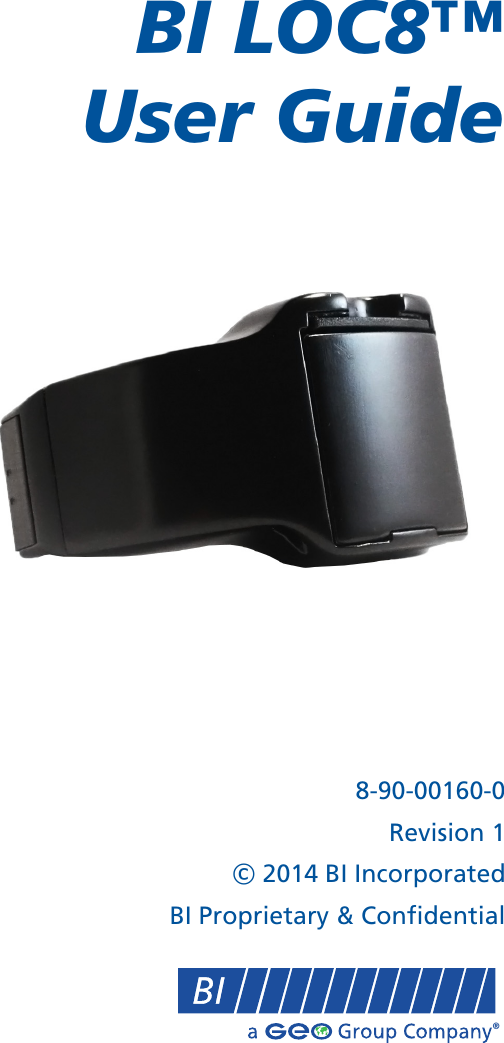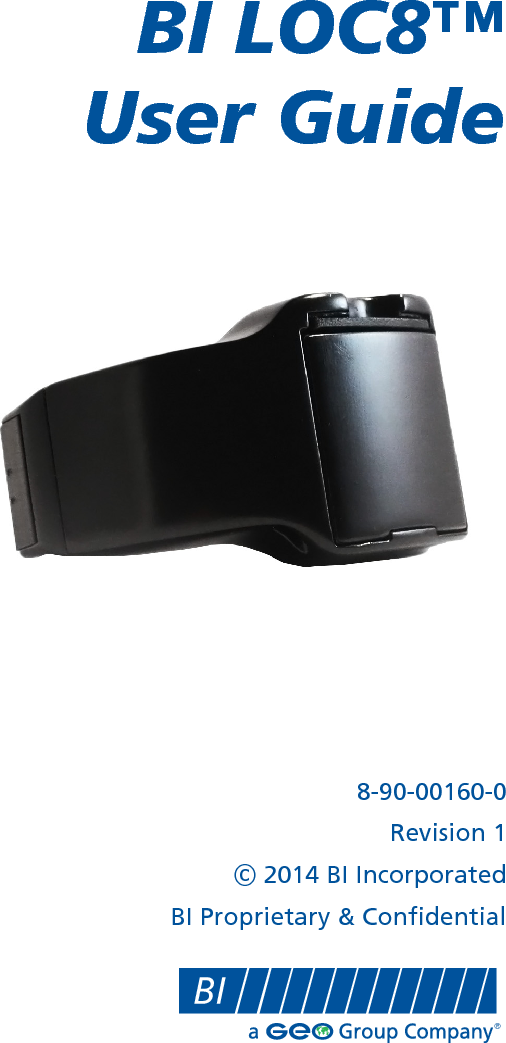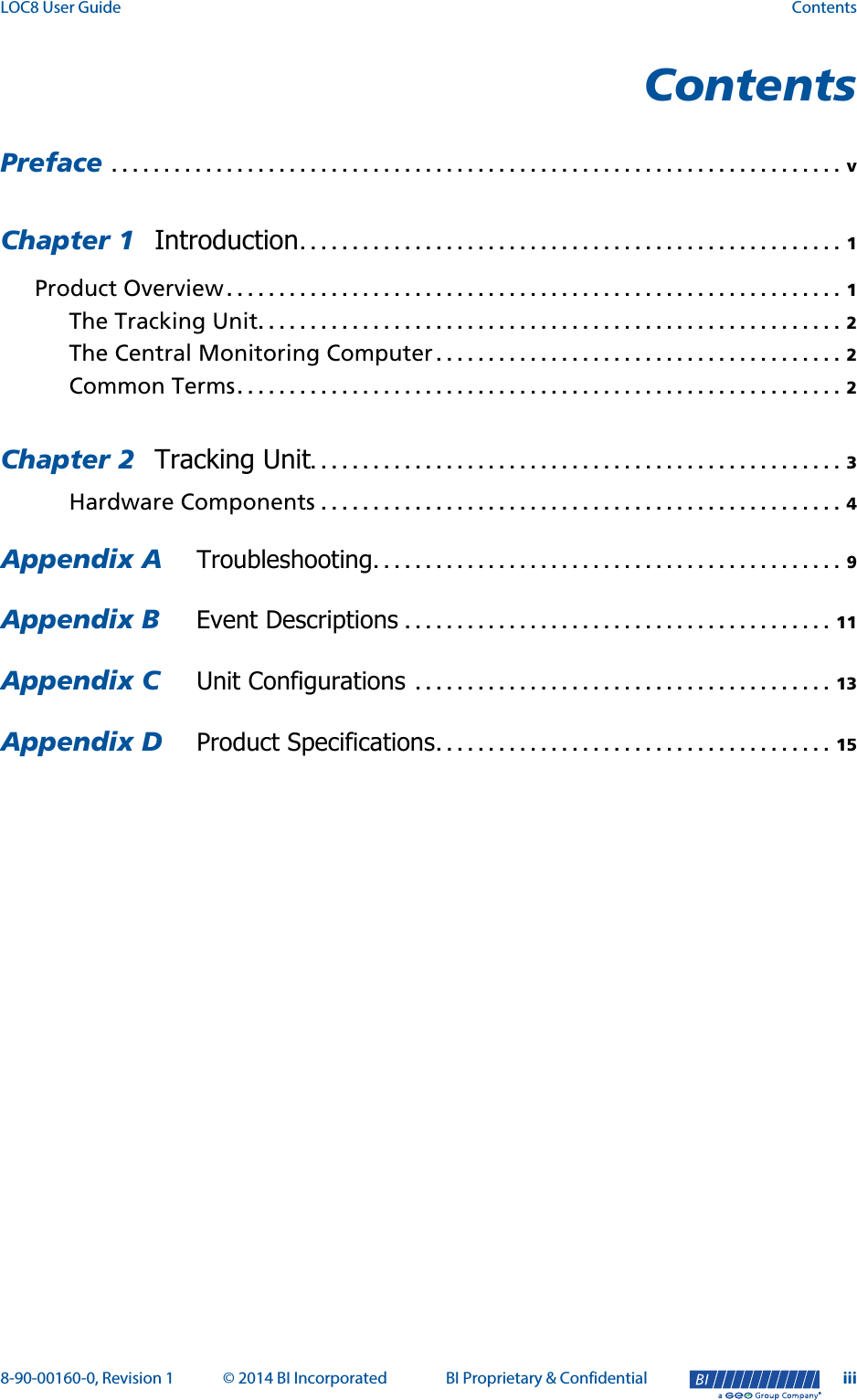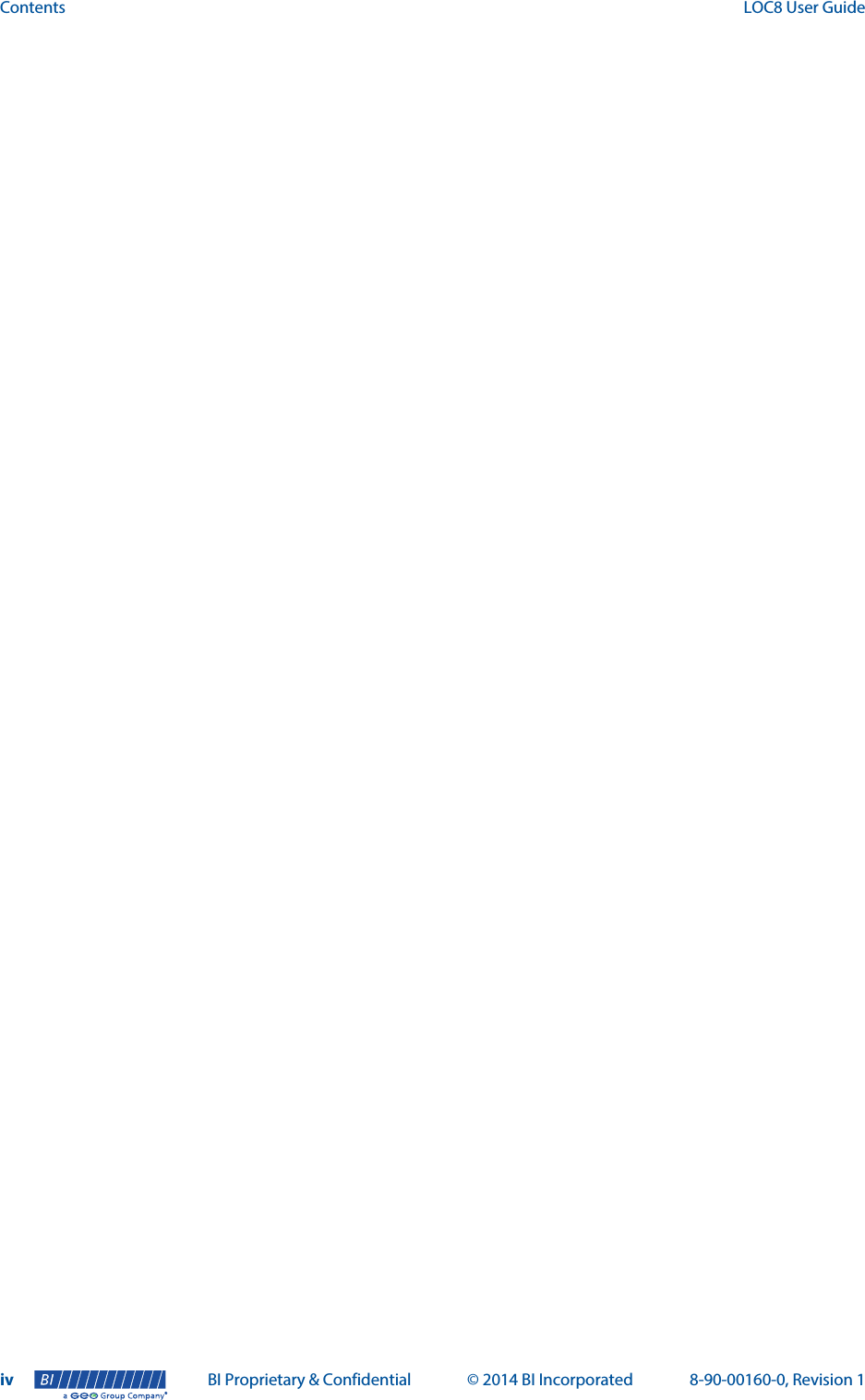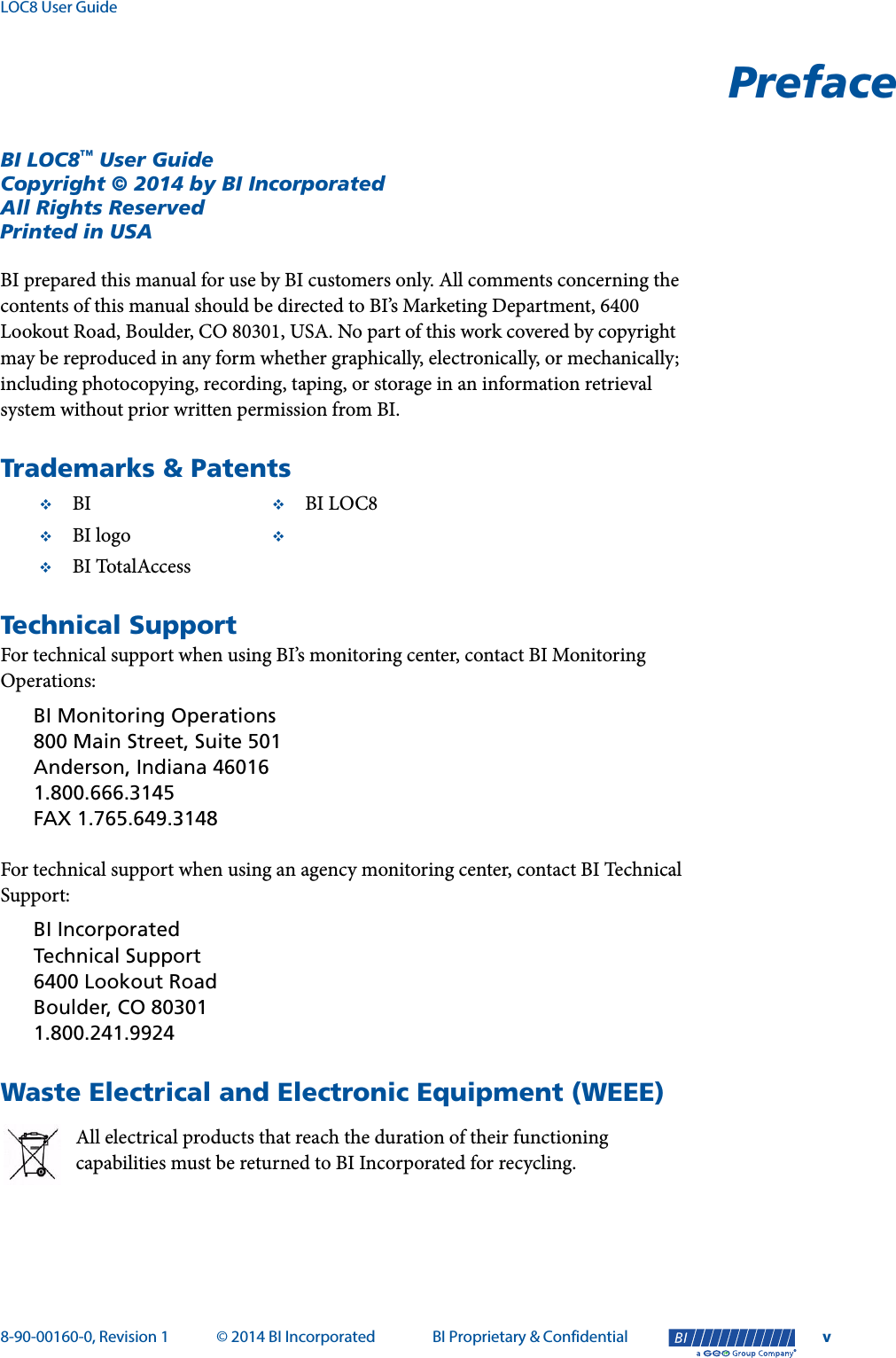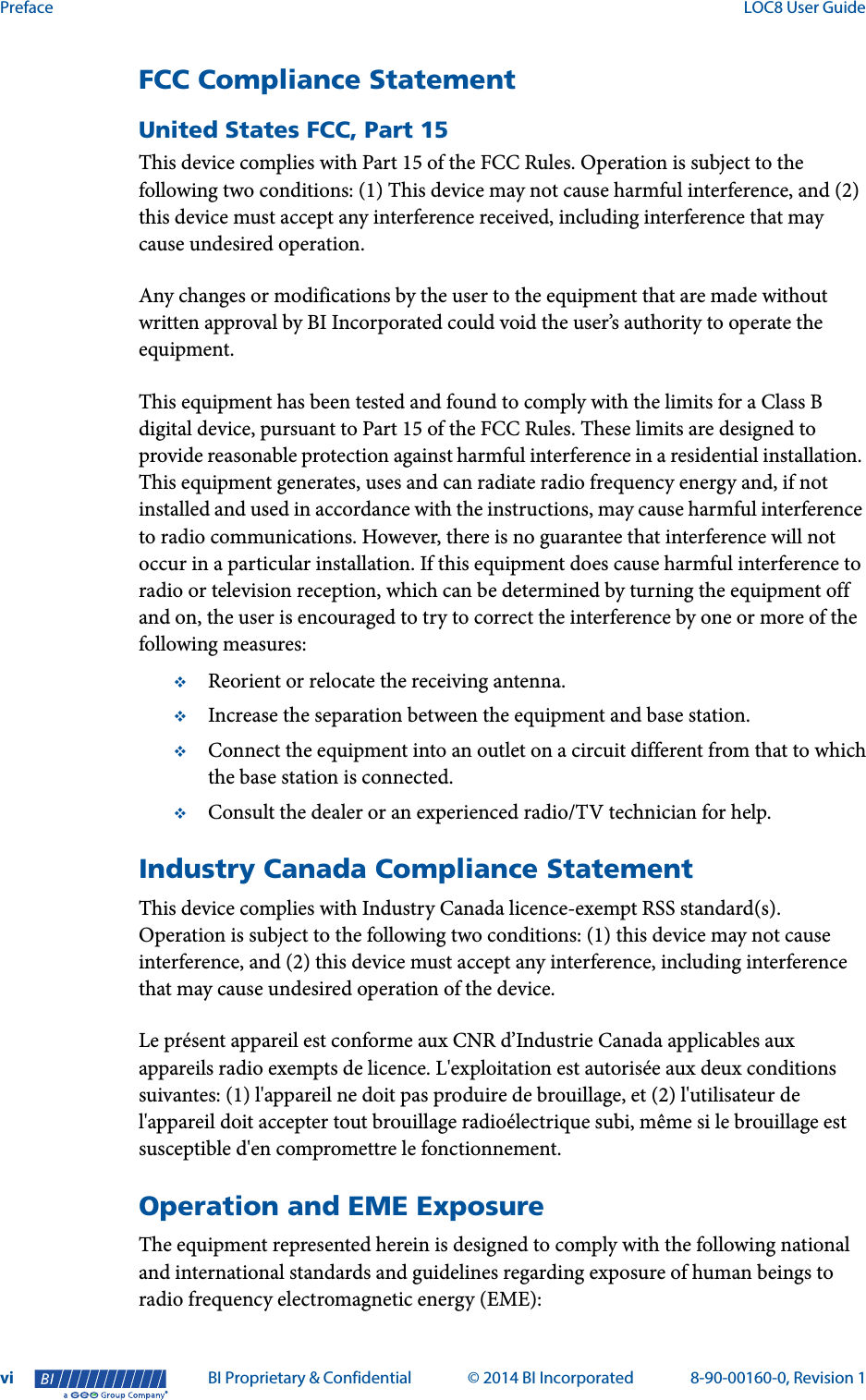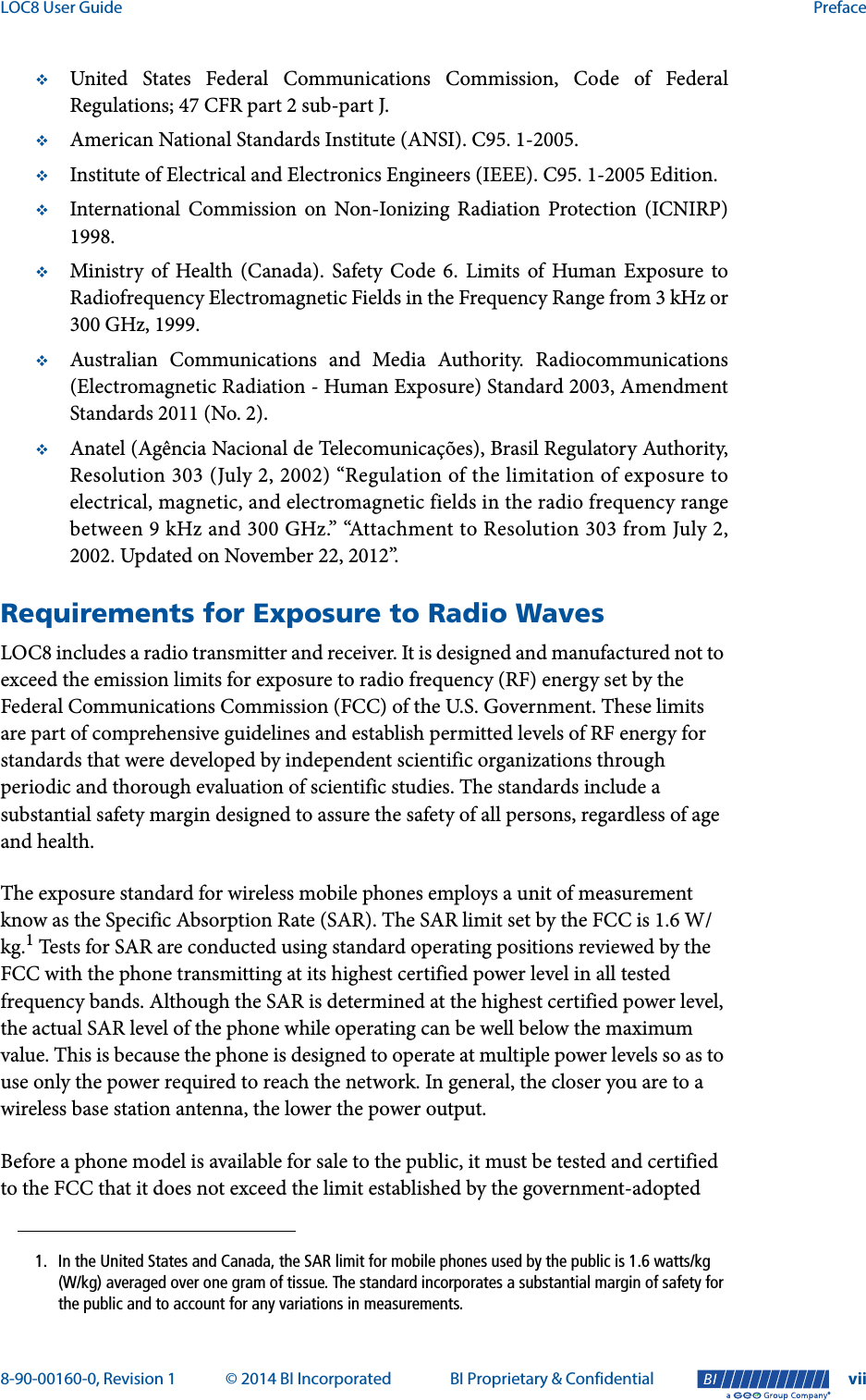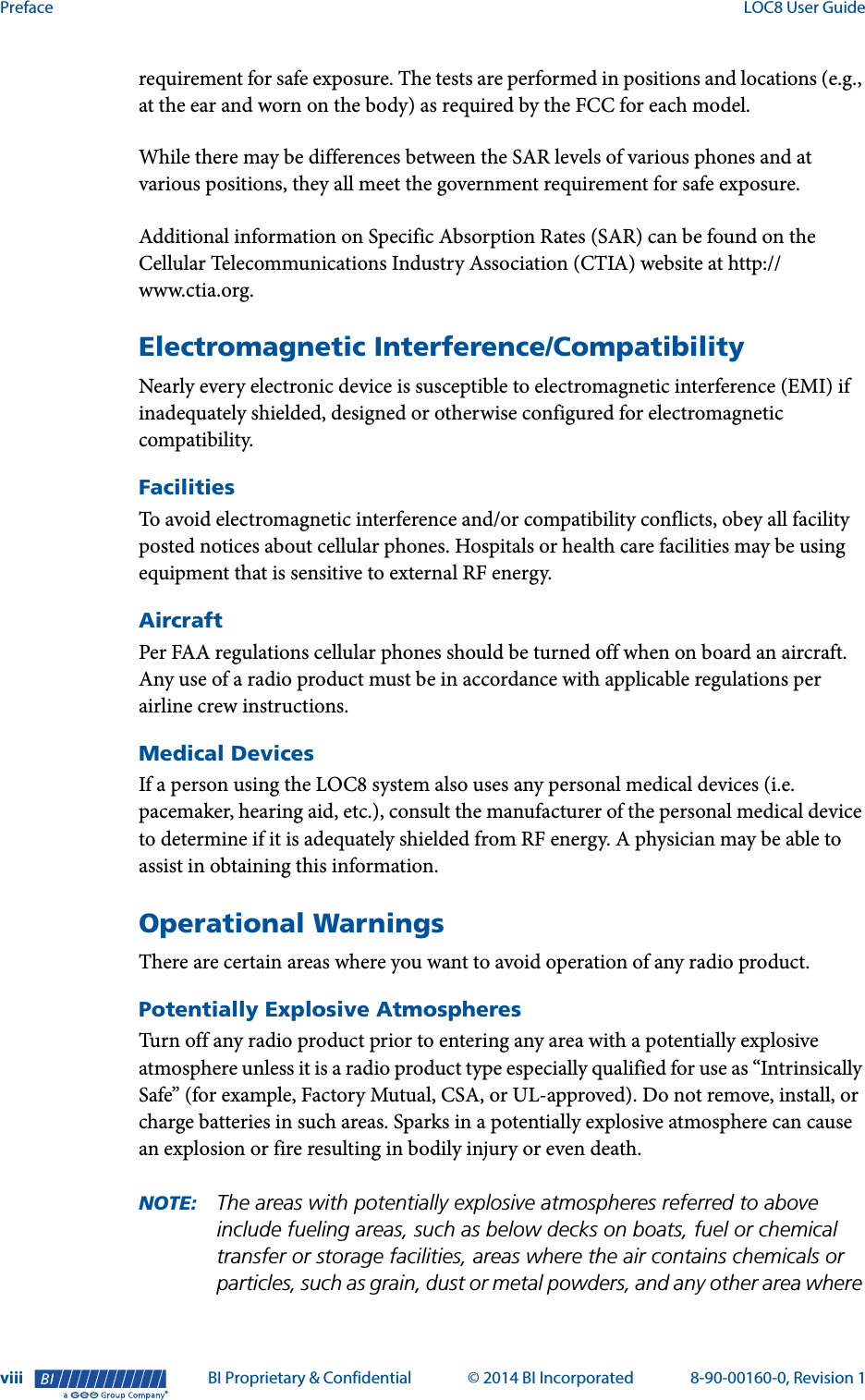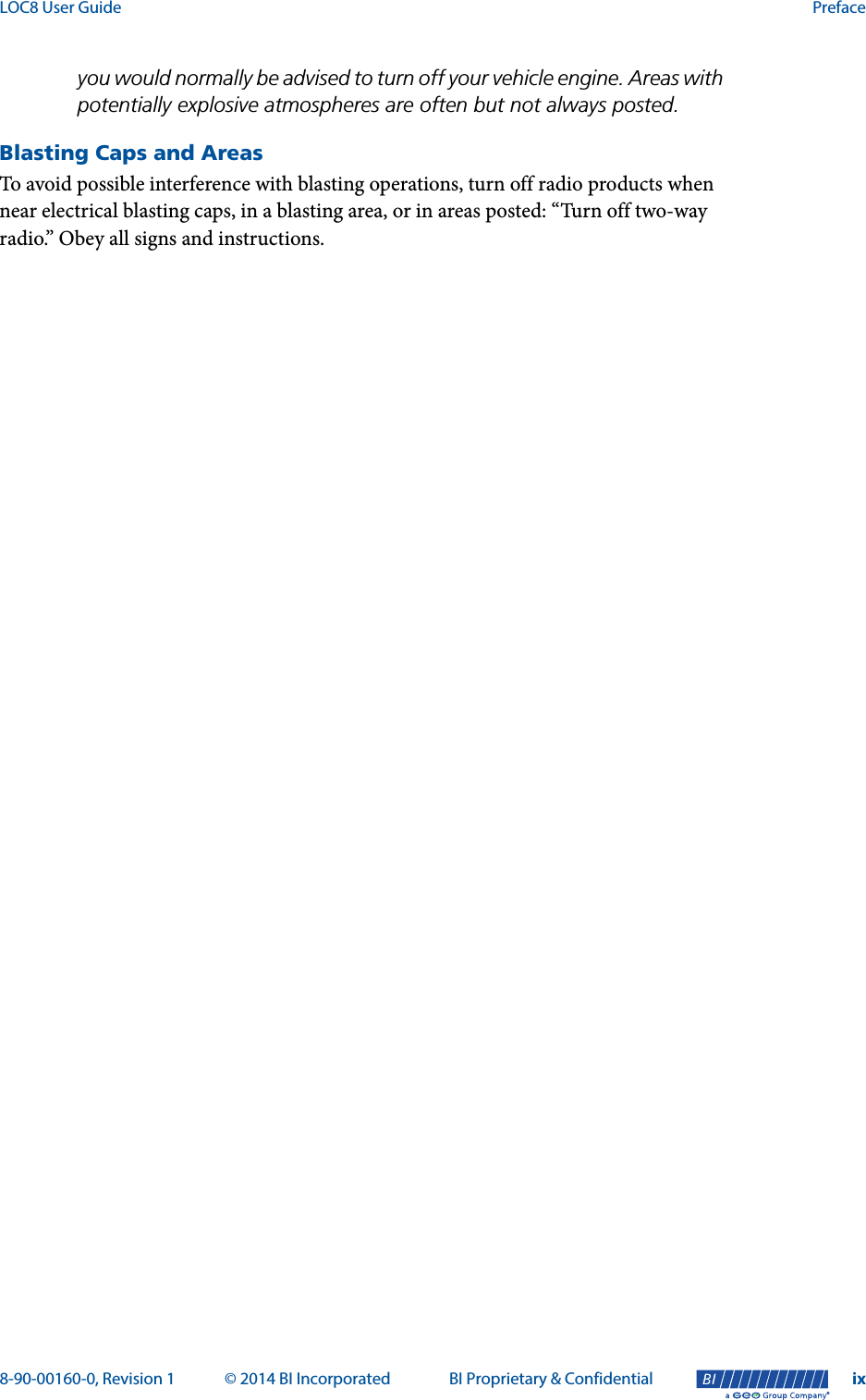BI orporated LC800A The BI LOC8 device is a single-piece, ankle-mounted tracking unit using GPS data and other location monitoring technologies to track individuals supervised by law enforcement agencies or pursuant to the order of a court User Manual LOC8 User Guide
BI Incorporated The BI LOC8 device is a single-piece, ankle-mounted tracking unit using GPS data and other location monitoring technologies to track individuals supervised by law enforcement agencies or pursuant to the order of a court LOC8 User Guide
User Manual
